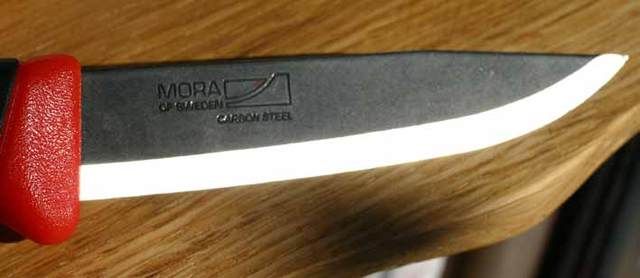Wow, enlightening thread, I wish I would have spoted that one. Now though, after all this practice in trying to follow a flat bevel, I find that I have to learn how to put a secondry bevel on the knife. Since I cant afford the gizmo's in the thread you showed me, do you have any idea how to do that?
Also, Im confused as to how a mousemat and COURSE wet/dry paper gets rid if the wire. I thought the whole point of sharpeneing was to succesively use finer stones. So even though it may get rid of the wire, wont it simply put a course edge back on the blade???
Cheers.
Stu
I have not read back through to find a recommendation for coarse wet and dry on a mousemat but it is not what I would recommend. I think the biggest help for me when learning sharpening has been bright light coming in from a low angle and some form of strong magnification. This is my favourite,
30x magnification with a light £5 delivered from ebay but lots of things like an old 50mm camera lens or the little lenses jewelers use will do nicely. I think many people spend a lot of time sharpening and polishing without actually touching the edge at all. It is really important to know whatever angle and grit you are using that you are removing metal from the edge. With a lot of experience and good light it is possible to do this but when learning magnification will help enormously.
The felt pen trick helps too but it is possible to remove all the visible pen and still not be touching the edge by 1/10mm.
The wet and dry on a mousemat effectively puts on a fine secondary.
This is my method for sharpening a knife with a secondary, you can use whatever stones you like or bits of wet and dry stuck to board.
1 use your coarsest grit sharpening on the primary bevel, use felt pen, magnifier or whatever to be sure you are following the whole bevel and removing metal right to the edge.
2 now first feel the angle of the bevel and then on the same coarse stone raise the back just ever so slightly, 2 or 3 degrees and sharpen just a few strokes...this means you are only removing metal along the very edge, the secondary bevel not from the whole primary. 3 or 4 strokes should be enough and look with your magnifier to check that you have now got a very small secondary all the way along. Or without a magnifier tilt the knife so the light shines off the primary like this
then tilt it away a couple of degrees untill you see the light shine off the secondary like this. Check the secondary is all the way along and you have not missed bits.

Now go down to your next grit and do another 3 or 4 strokes, and so on until you are at your finest grit. I would normally finish at 1000 grit emery or similar. If you want to go one step further you can put some autosol (metal polish from car diy places) on a piece of planed softwood and draw your knife across it about 4 or 5 times. Personally I do not get worried about "wire edge", if you go through this process your knife will be sharp, not all knives produce a wire edge and it depends on your exact technique but if it does then it will come away normally during the later fine stone or emery stages 1000 grit and before the final autosol polish, if you have good light and magnification you will see it otherwise you may not. The benefit of this system over a single bevel is that because you are only sharpening/polishing a secondary that is less than 1mm wide it only takes 3 or 4 strokes on each stone. The drawback is that you do not have the wide primary to feel as a jig or guide when you are sharpening, effectively you have to lay the primary flat and then pick the back up just a touch and maintain that angle, it comes with practice.



